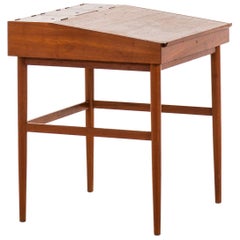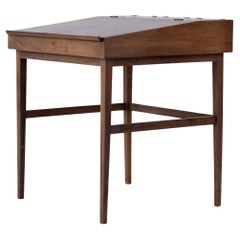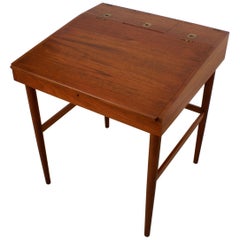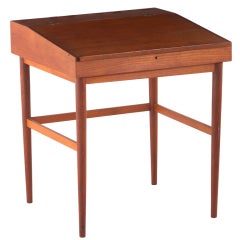Finn Juhl Nv40
Mid-20th Century Scandinavian Scandinavian Modern Desks
Teak
Vintage 1950s Danish Scandinavian Modern Desks and Writing Tables
Brass
Mid-20th Century Danish Mid-Century Modern Desks and Writing Tables
Brass
Recent Sales
Vintage 1940s Danish Scandinavian Modern Desks and Writing Tables
Teak
Vintage 1940s Danish Desks and Writing Tables
Brass
Mid-20th Century Danish Scandinavian Modern Desks and Writing Tables
Teak
Vintage 1940s Danish Scandinavian Modern Desks
Brass
Mid-20th Century Danish Scandinavian Modern Desks
Teak
20th Century Danish Mid-Century Modern Desks and Writing Tables
Teak
People Also Browsed
Mid-20th Century Danish Scandinavian Modern Desks and Writing Tables
Brass
Mid-20th Century Danish Mid-Century Modern Chairs
Leather, Wood
Vintage 1950s Danish Scandinavian Modern Lounge Chairs
Upholstery, Teak
Vintage 1950s Danish Scandinavian Modern Lounge Chairs
Cotton, Teak
Vintage 1950s Danish Mid-Century Modern Lounge Chairs
Brass
Vintage 1950s Danish Scandinavian Modern Bookcases
Brass
Vintage 1950s Danish Scandinavian Modern Cabinets
Rattan, Oak
Vintage 1940s Danish Scandinavian Modern Lounge Chairs
Teak, Fabric
Vintage 1950s Danish Scandinavian Modern Armchairs
Teak
2010s Italian Wardrobes and Armoires
Walnut
Vintage 1950s American Mid-Century Modern Cabinets
Birch, Walnut
Vintage 1950s Danish Mid-Century Modern Armchairs
Teak
Vintage 1950s Danish Scandinavian Modern Armchairs
Leather, Teak
Mid-20th Century Danish Scandinavian Modern Lounge Chairs
Naugahyde, Teak
20th Century Danish Scandinavian Modern Cabinets
Aluminum
Mid-20th Century Danish Scandinavian Modern Carts and Bar Carts
Maple, Teak
Finn Juhl for sale on 1stDibs
Along with Hans Wegner, Arne Jacobsen and Børge Mogensen, Finn Juhl was one of the great masters of mid-20th-century Danish design. Juhl was the first among that group to have his work promoted overseas, bringing the character of the nation’s furnishings — and the inherent principles of grace, craftsmanship and utility on which they were based — to an international audience.
A stylistic maverick, Juhl embraced expressive, free-flowing shapes in chair, credenzas and sofa designs much earlier than his colleagues, yet even his quietest pieces incorporate supple, curving forms that are at once elegant and ergonomic.
As a young man, Juhl hoped to become an art historian, but his father steered him into a more practical course of study in architecture. He began designing furniture in the late 1930s, a discipline in which, despite his education, Juhl was self-taught, and quite proud of the fact.
Juhl’s earliest works, designed in the late 1930s, are perhaps his most idiosyncratic. The influence of modern art is clear in his 1939 Pelican chair: an almost Surrealist take on the classic wing chair. Critics reviled the piece, however; one said it looked like a "tired walrus." Juhl had tempered his creativity by 1945, when the workshop of Danish cabinetmaker Niels Vodder began to issue his designs. Yet Juhl’s now-classic NV 45 armchair still demonstrates panache, with a seat that floats above the chair’s teak frame.
Juhl first exhibited his work in the United States in 1950, championed by Edgar Kaufmann Jr., an influential design critic and scion of America’s most prominent family of modern architecture and design patrons. (Kaufmann’s father commissioned Frank Lloyd Wright’s design of the house “Fallingwater.”)
Juhl quickly won a following for such signature designs as the supremely comfortable Chieftan lounge chair, the Judas table — a piece ornamented with stylish inlaid silver plaquettes — and the biomorphic Baker sofa. After an article authored by Kaufmann on Juhl and his work appeared in the U.S.-based magazine Interiors in 1948, he began receiving American commissions.
Kaufmann commissioned Juhl to create the exhibition design for, and contribute pieces to, the 1951 edition of the Good Design shows he organized for MoMA and Chicago’s Merchandise Mart. Baker Furniture asked Juhl to design for the firm, and he produced a collection of chairs, tables and cabinets, and, later, the 1957 sofa.
Scandinavian modernist seating, such as the chairs and sofas Juhl created for Baker, became immensely popular in postwar America, as the seeds of the Scandinavian style that Juhl sowed took root and spread in the United States. Juhl and his work featured prominently in the landmark show “Design from Scandinavia,” which opened in 1954 at the Virginia Museum of Fine Arts and traveled to 24 museums in the U.S. and Canada; over three years, it was seen by more than a million people.
Juhl’s furniture — as well as his ceramics, tableware and accessories — has an air of relaxed sophistication and elegance that is unique in the realm of mid-century design.
Find vintage Finn Juhl armchairs, coffee tables, desks and other furniture for sale on 1stDibs.




